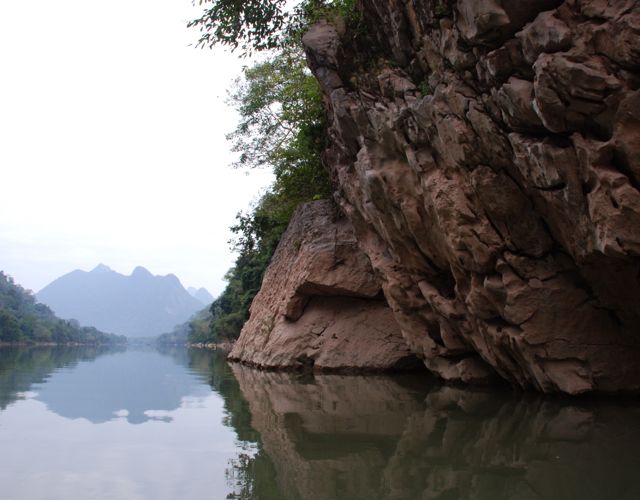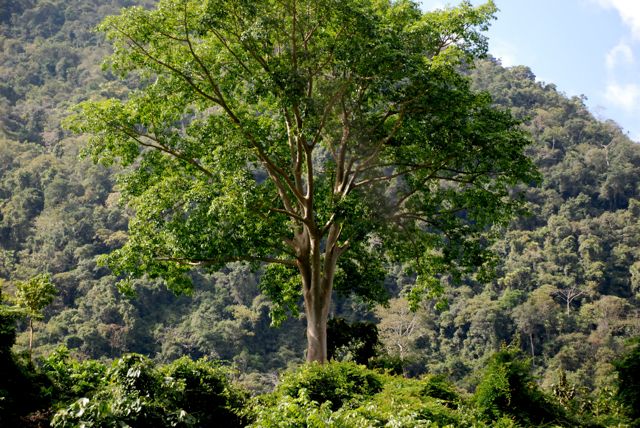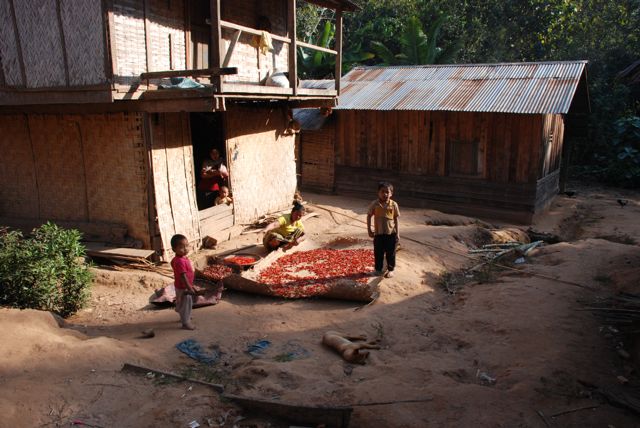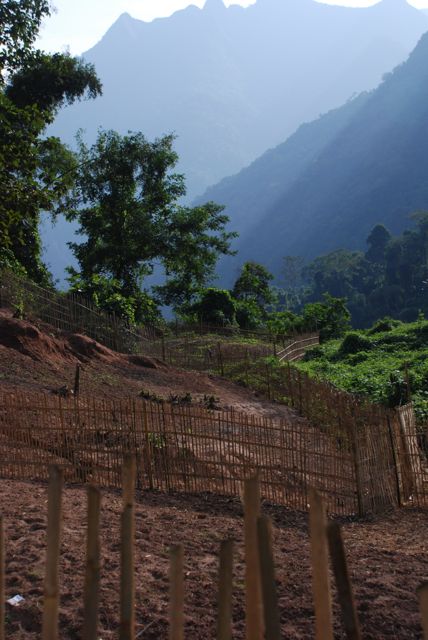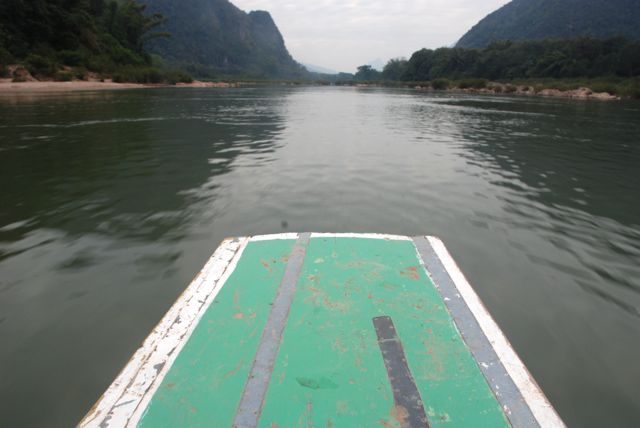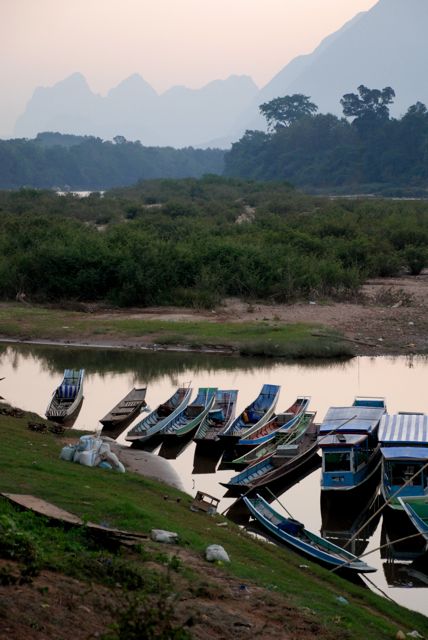On the way down I lay back in the kayak and looked up the valley cliff faces as the kayak span lazily and drifted downstream with the pull of the current. All I could see was wild forest canopy, creepers, epiphytes and vivid, chaotic, lush green life with a background of soaring cliff and mountain ridge. All of this slid to the left in my vision as I floated onwards. All I could hear in the still air was silence accentuated by exotic bird song that glanced and bounced down the valley walls to my ears. Although I was in a wild and remote place on a big and powerful river, I leaned right back, not looking where I was floating.
The sensation was one of complete surrender of control. Being there, slowly revolving, looking into a beautiful and alien place, and letting the immense silence and strange bird calls filter into my brain, was almost like taking a drug. It was a deeply immersive experience into a space and place. There was the thrill of surrender of control, as my kayak was moving pretty quickly and I was, for a moment, not in control of it.
I’d found my way along the river.
The Nam Ou is one of the royal roads of Laos, and has been so for thousands of years. In the past people floated on bamboo rafts, not kayaks, but they still moved along it, mostly for more utilitarian reasons than my meditation in the wilderness. It flows south from the mountains of the Laos-China border for 450kms before joining the Mekong. On my way north from Luang Prabang I had noticed a half-completed dam across a section of the Nam Ou further south. It turns out that this is just one of seven dams that the Chinese government is building in the Nam Ou. 89 villages along this river will be displaced when the project is finished. That’s 89 entire communities. These people all have a strong sense of place. In being forced to leave their villages it is inevitable that they will experience a sense of grief at losing their home grounds.
This process is losing one’s home ground to the building of a dam by outsiders is well narrated by the Australian-made 2013 film, The Rocket. In the film a small boy’s village is forced to relocate because of the building of a vast dam in his river valley. I saw the film a year before coming to Laos, and it was poignant how closely that fiction mirrors the reality here in the country. Most us use electricity and the dams will generate electricity, but as far as the 89 villages along the Nam Ou are concerned they would be far better off by the development of small-scale renewable technologies.
Drying chillies in the sun.
Vegetable gardens planted along the banks of the river when it runs low in the dry season.
The lifestyles and knowledge of the boatmen of the Nam Ou are about to end.
Perhaps copies of Edward Abbey’s novel The Monkey Wrench Gang could be translated and quietly distributed to the villagers: at the end of that story the character of Seldom Seen Smith kneels on top of the huge concrete Glen Canyon Dam on the Colorado River and prays for a ‘pre-cision earthquake’ to remove the ‘temporary plug’ from a wild waterway. If you know the novel you’ll know what kind of earthquake he’s talking about. You can only dream.
